The following post comes from Tuan Tran, a rising 3L at Scalia Law and a Research Assistant at C-IP2.

Small ideas can lead to big changes, which in turn can make a significant impact on the world, but—as technology executive, attorney, and investor Andrew Byrnes knows well—this is no easy task.
On May 4, 2022, Mr. Byrnes gave a talk co-hosted by the Center for Intellectual Property x Innovation Policy (C-IP2) at George Mason University, Antonin Scalia Law School, and Business for a Better World Center, School of Business, George Mason University. With his background and experiences in both the legal and technology industries, Mr. Byrnes shared his knowledge about how just a single idea can be transformed to make a great impact on society. His talk focused on two main points: how ideas are developed, and the framework he has used to implement and transform those ideas into something impactful.
According to Mr. Byrnes, the first step is “finding the idea.” There are three principles involved in the process: be curious, look at intersections, and be passionate. The first principle is to be open to the possibility of having a great idea that can either address a challenge or take advantage of an opportunity. It is important to listen and be observant, because the more one talks with new people about new topics in different contexts, the more one will be likely to come up with interesting and powerful new ideas. One of the key things to keep in mind is to not waste time looking for a perfect idea, because a big idea is usually not presented initially in its complete form. Instead, it is usually presented as smaller ideas that are eventually brought together. Second, “looking at intersections between disciplines and industries” means to be curious and examine known things and combine them “in ways that they haven’t been combined before.” For example, with patents, “most inventions are combinations of known elements.” The third principle stands out as the most important one: being passionate about the pursuit of the idea. Without passion, it is extremely difficult to go from that great idea to real-world impact.
Mr. Byrnes has laid out a framework that involves the most crucial aspects of how to accomplish the goal of transforming ideas into impactful innovation. The framework has “five pillars” in a “hub-and-spoke” formation: legal clearance, intellectual property (IP) protection, market validation, operationalization, and user adoption. As Mr. Byrnes explained, “The reason why I have this hub-and-spoke model is it’s not remotely linear. You . . . have to do all of these things in sequence and at once, and once you’ve gone through all of them, you have to go back and do them all again, because the world is dynamic, your idea is dynamic, and the operationalization of the idea will require you to . . . adjust over time.” Following is the discussion of the five pillars.
Legal Clearance
This pillar begins by “evaluating the existing law.” It is essential to understand the related law and how it could impact what will be done with the ideas, including any legal barriers that prevent the implementation of an idea. When as is common the law is unclear, there are two choices, both with costs and opportunities. Putting a hold on the idea can help avoid potential legal problems, but that might result in being left behind when the competitors decide to engage in similar markets or to produce similar products. It may be difficult to enter the market later. On the other hand, proceeding with the idea when the law is unclear might be costly later after the regulators or courts say that the implementer cannot do what they have been doing. Therefore, a company needs legal advice to understand all aspects of the related law before implementing any ideas so that the company can come up with the most suitable strategy. Lawyers are a helpful source, and—for any startups in the Northern Virginia area—so is the Innovation Law Clinic at George Mason University Antonin Scalia Law School.
IP
Mr. Byrnes pointed out that there are “many facets” involved in IP, the second pillar. Important forms of IP for protecting one’s inventions and businesses are patents and trademarks. In short, a patent is “the grant of a property right to an inventor by the government” that can “exclude anyone [else] from making, selling, or using the invention for a [specific] period of time.” Not every idea or invention can be patented, because there are some legal requirements for patent protection; trade secrets may be able to provide protection where patents cannot. However, where applicable, patent protection can be valuable for limiting competition during the life of the patent, raising the valuation of a company, and potentially for licensing purposes. When it comes to patent protection, filing as soon as possible is important because the first inventor to file a patent application will have priority. Also, it is advisable to keep documentation and to have written agreements with employees and collaborators, if any, to ensure the ownership of our idea. Trademarks are also important. A great idea may not succeed if the consumers or clients cannot find the product or service or associate it with your company. Ideally, select a trademark “that is as strong as possible” at an early stage to ensure maximum brand protection.
Market Validation
After legal clearance and protecting IP, the third pillar is market validation. Even “a legal and protected idea” is not impactful when people do not need it. As mentioned earlier, the world changes at a fast pace, so what people needed in the past might not be what they find important in the present. Thus, to build a sustainable business from great ideas, it is vital to “(re)visit demand,” “assess the model,” and “engage prospects directly.” When revisiting demand, implementers should ask themselves whether their ideas are solving any problems or providing solutions to “pain point[s]” they envisioned at the beginning or some other problems they have developed over time. In terms of economics, business models should be assessed for their sustainability. Obtain feedback from clients and consumers using a variety of methods, both traditional, e.g., customer surveys, and creative. For example, Arctop utilizes neuroscience technology to develop an app that can evaluate a user’s experience with a product based on the user’s brain activity. This method can be a better representation of customer satisfaction than what is available through a rating system or survey.
Operationalization
As Mr. Byrnes says, it is exciting to confirm that people still love and want our ideas, “but we actually have to get it done.” The operationalization area or fourth pillar is the “get-stuff-done” (the “GSD”) stage. There are three main tasks involved in this stage: “building the right GSD team, . . . focusing on execution, and then prioritizing efficiency and viability.” Building the GSD team is the most important task. Mr. Byrnes lists being emotionally intelligent, curious, diverse in perspective, synergy-seeking, resilient, and confident as important characteristics for team members. The more people in the team who have these characteristics, the more effectively and efficiently the team members can collaborate to accomplish mutual goals. Second, “ideas alone are not good enough”; the focus needs to be on execution. Avoid “mak[ing] the perfect enemy of the good.” For example, a team may wait to act if their vision of the ways things will occur is not realized, but the result may be that, “if you wait that long, … the world’s going to pass you by.” Therefore, implementers need to be confident in the team they have built and the accomplishments they have achieved in earlier stages. As Mr. Byrnes states, “be biased to action, and that’s most likely the best risk-minimizing approach.” In addition, “prioritizing efficiency and viability” is crucial. By “spend[ing] no more money than you’re making,” the team does not “hav[e] to seek as much outside investment and engagement over time.”
User Adoption
The last pillar of the framework is about conveying to the world what you are doing. To be successful at this stage, Mr. Byrnes states, it is important to have “widespread visibility,” “a compelling narrative,” and “third-party validation.” There are several tools to help in achieving widespread visibility: “earned media,” paid advertisements, or “owned” media, such as social media. Although all of these tools helping reach as many customers as possible, the most suitable tool should be chosen carefully depending on the situation. The tools are most useful only when there is a compelling narrative to deliver to the target audience. It takes effort to come up with a unique narrative, but in general, a compelling narrative should convey a key benefit of the products directly and concisely. Finally, products and services will garner more trust and credibility when potential customers see others whom they know and trust approving or using those products or services. Thus, start-up companies are highly encouraged to seek third-party validation, whether from other companies, non-profit organizations, governments, or others.
A small idea can make significant impact on society, but the path from forming an idea to making the impact is challenging. Many companies have struggled to make impactful innovations because of the lack of relevant knowledge and experiences. During the talk, Mr. Byrnes pointed out several unique problems and a sophisticated framework of five pillars to overcome those problems. Although following the five-pillars model might not guarantee success, it significantly improves any company’s chances of creating impactful innovations quickly and effectively.
 By Yogesh Pai
By Yogesh Pai By Wade Cribbs
By Wade Cribbs By Terence Yen
By Terence Yen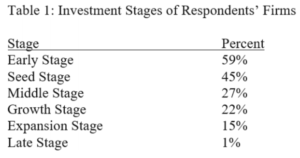
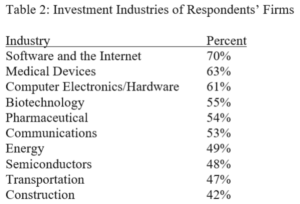
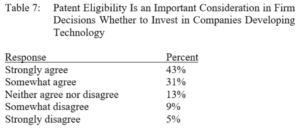
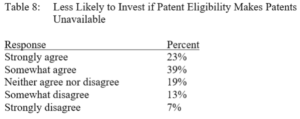
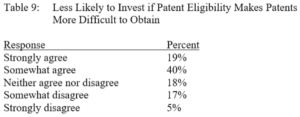
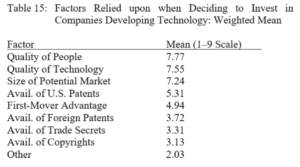
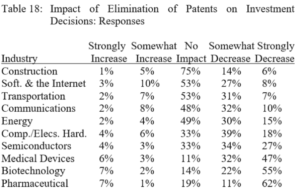
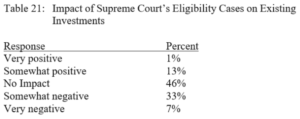
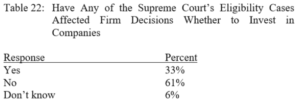
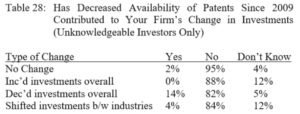
 By Mandi Hart
By Mandi Hart